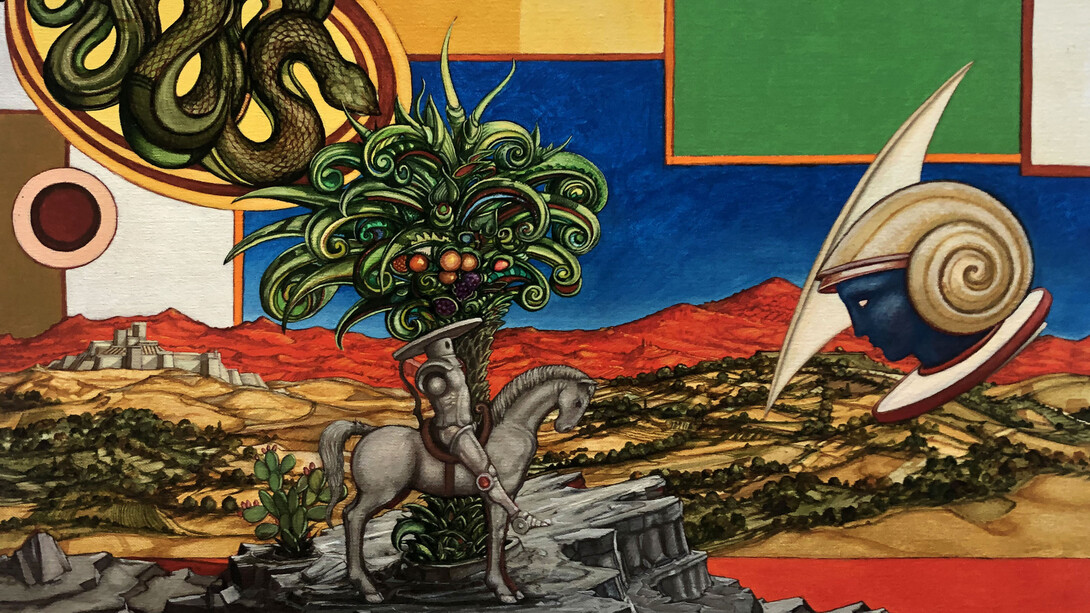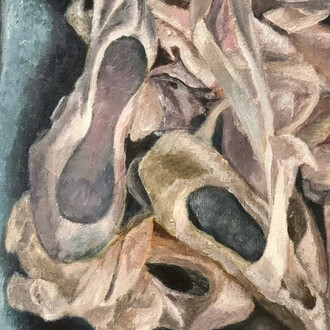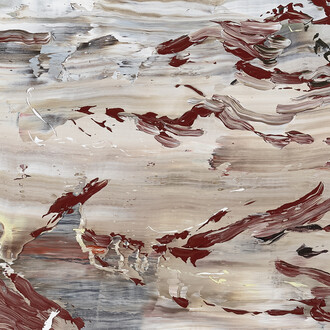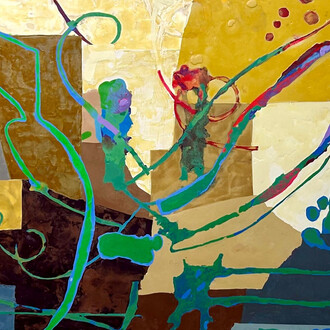Galleria Vik Milano presents Grand tour, Adriano Pompa’s new solo exhibition, curated by Alessandro Riva, from November 25, 2025 to January 15, 2026.
The project unfolds as an ideal journey inspired by the myth of the Grand Tour— not as a historical reenactment but as a dystopian and dreamlike vision in which the artist, born into an artistic family and raised in the workshop of his father, Gaetano Pompa, a painter and sculptor of extraordinary refinement, steps into the role of an eighteenth-century traveler while keeping his gaze firmly rooted in the present. The legacy of his father, a master of a cultured and corporeal surrealism, resonates throughout his work, yet becomes transfigured into an autonomous and contemporary artistic quest, where the journey becomes a mental and pictorial experience— a path in which memory, time, and imagination merge into a language that is at once narrative and symbolic. For Vittorio Sgarbi, Pompa’s painting is “necessary, inevitable, both a vice and a reward,” composed of “restless paintings, animated by an uncertainty of destiny.” Pompa belongs to that lineage of artists who live painting as an act of knowledge, an exercise in vision capable of transforming memory into matter and imagination into form.
“I imagined myself as both an eighteenth-century and a contemporary painter,” writes Pompa. “I wanted to maintain a fil rouge through an overflowing use of gold, a symbol not of luxury or opulence but of industriousness and emotional temperament, of reflected light that shifts and changes according to climate, mood, and atmosphere.” The result is a wunderkammer of abstract and figurative inventions, balanced poetically between reality and imagination, between myth and dream. The works engage with the eclectic late-nineteenth-century interiors of Galleria Vik Milano, with their stuccoes and mirrors, weaving a subtle dialogue between memory and invention, history and contemporary vision.
“In the canvases, sculptures, and panels of Adriano Pompa,” writes the exhibition’s curator Alessandro Riva, “knights, ladies, dragons, flying fish, lions, rhinoceroses, serpents, trees with golden leaves, giant eggs, shells, and walled cities coexist: apparitions suspended between reality and imagination, between myth and dream, like mysterious epiphanies of an imaginary Grand Tour— echoes of distant eras and territories which, like the architectures, habits, and customs of the invisible cities described by Marco Polo to Emperor Kublai Khan in Italo Calvino’s novel, exist only as long as someone continues to paint them or recount them.”
A central element of the exhibition is gold, understood not as a symbol of splendor or display, but as an emblem of industriousness and emotional vibration— of reflected, ever-shifting light capable of adapting to atmospheric and interior changes. In this symbolic narrative, gold becomes the guiding thread linking different eras and sensibilities, blending historical memory and modern tension.
As Fabrizio Dentice writes, “Pompa is a painter of the imaginary— or rather, of imagination. A faculty that looks upward and forward into the possibility of the impossible. But the painter also looks inward, where obscure mythologies proliferate, where the spirit of his illustrious father, Gaetano, his beloved master, speaks, and where a wind blows from the forests of his mother’s Germany.” Interior and symbolic worlds emerge as in a lucid dream, populated by mythical creatures and fantastical animals that seem to come from an ancient medieval bestiary, yet transformed into a modern and surreal key, suspended between melancholy and wonder.
Grand tour is thus a poetic and visionary journey, but also an imaginary itinerary through Italian and European landscapes reinvented through Pompa’s sensibility— a path in which painting becomes an inner map and travel diary, where gold, light, and line are transformed into a story of movement, memory, and metamorphosis.















